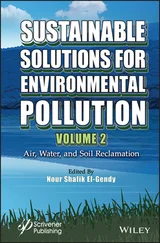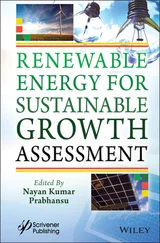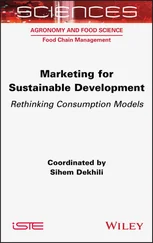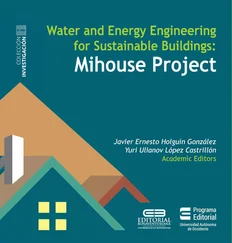109 109 Vedaraman, N. and Venkatesh, N. (2011). Production of surfactin by Bacillus subtilis MTCC 2423 from waste frying oils. Braz. J. Chem. Eng. 28 (2): 175–180.
110 110 Pan, L.S., Xu, N., Tian, Z. et al. (2011). Preparation and characterization of poly(propylene carbonate)/alkali lignin composite sheets by calendering process. In: Advanced Materials Research, vol. 233–235, 1786–1789. Trans Tech Publications Ltd.
111 111 Hasanizadeh, P., Moghimi, H., and Hamedi, J. (2018). Biosurfactant production by Mucor circinelloides: Environmental applications and surface‐active properties. Eng. Life Sci. 18 (5): 317–325.
112 112 Banasik, A., Kanellopoulos, A., Claassen, G.D.H. et al. (2017). Closing loops in agricultural supply chains using multi‐objective optimization: A case study of an industrial mushroom supply chain. Int. J. Prod. Econ. 183: 409–420.
113 113 Garg, V.K., Suthar, S., and Yadav, A. (2012). Management of food industry waste employing vermicomposting technology. Bioresour. Technol. 126: 437–443.
114 114 Ponte Rocha, M.V., Gomes Barreto, R.V., Melo, V.M., and Barros Goncalves, L.R. (2009). Evaluation of cashew apple juice for surfactin production by Bacillus subtilis LAMI008. Appl. Biochem. Biotechnol. 155: 366–378.
115 115 Rocha, M.V., Souza, M.C., Benedicto, S.C. et al. (2007). Production of biosurfactant by Pseudomonas aeruginosa grown on cashew apple juice. Appl. Biochem. Biotechnol. 137–140: 185–194.
116 116 Giro, M.E., Martins, J.J., Rocha, M.V. et al. (2009). Clarified cashew apple juice as alternative raw material for biosurfactant production by Bacillus subtilis in a batch bioreactor. Biotechnol. J. 4: 738–747.
117 117 Liu, X., Ren, B., Chen, M. et al. (2010). Production and characterization of a group of bioemulsifiers from the marine Bacillus velezensis strain H3. Appl. Microbiol. Biotechnol. 87: 1881–1893.
118 118 Verma, S., Prasanna, R., Saxena, J. et al. (2012). Deciphering the metabolic capabilities of a lipase producing Pseudomonas aeruginosa SL‐72 strain. Folia Microbiol. (Praha) 57: 525–531.
119 119 FAO (2008). International Year of the Potato 2008 New Light on a Hidden Treasure. FAO.
120 120 Thompson, D.N., Fox, S.L. and Bala, G.A., (2000). Biosurfactants from potato process effluents. In: M. Finkelstein and B.H. Davison (eds), Twenty‐First Symposium on Biotechnology for Fuels and Chemicals. Applied Biochemistry and Biotechnology, pp. 917–930. Humana Press, Totowa, NJ.
121 121 Das, K. and Mukherjee, A.K. (2007). Comparison of lipopeptide biosurfactants production by Bacillus subtilis strains in submerged and solid state fermentation systems using a cheap carbon source: Some industrial applications of biosurfactants. Process Biochem. 42 (8): 1191–1199.
122 122 Wang, Q., Chen, S., Zhang, J. et al. (2008). Co‐producing lipopeptides and poly‐γ‐glutamic acid by solid‐state fermentation of Bacillus subtilis using soybean and sweet potato residues and its biocontrol and fertilizer synergistic effects. Bioresour. Technol. 99 (8): 3318–3323.
123 123 Araújo, H.W., Andrade, R.F., Montero‐Rodríguez, D. et al. (2019). Sustainable biosurfactant produced by Serratia marcescens UCP 1549 and its suitability for agricultural and marine bioremediation applications. Microb. Cell Fact. 18 (1): 1–13.
124 124 Barros, F.F.C., Ponezi, A.N., and Pastore, G.M. (2008). Production of biosurfactant by Bacillus subtilis LB5a on a pilot scale using cassava wastewater as substrate. J. Ind. Microbiol. Biotechnol. 35 (9): 1071–1078.
125 125 Nitschke, M. and Pastore, G. (2003). Cassava flour wastewater as a substrate for biosurfactant production. Appl. Biochem. Biotechnol. 105–108: 295–301.
126 126 Nitschke, M. and Pastore, G.M. (2006). Production and properties of a surfactant obtained from Bacillus subtilis grown on cassava wastewater. Bioresour. Technol. 97: 336–341.
127 127 Makkar, R.S., Cameotra, S.S., and Banat, I.M. (2011). Advances in utilization of renewable substrates for biosurfactant production. AMB Express 1 (1): 5.
128 128 Nitschke, M., Ferraz, C., and Pastore, G.M. (2004). Selection of microorganisms for biosurfactant production using agroindustrial wastes. Braz. J. Microbiol. 35: 81–85.
129 129 Marcelino, P.R.F., Gonçalves, F., Jimenez, I.M. et al. (2020). Sustainable production of biosurfactants and their applications. In: A.P. Ingle, A.K. Chandel, and S.S. Silva (eds),. Lignocellulosic Biorefining Technologies: 159–183. Available at: https://doi.org/10.1002/9781119568858.ch8.
130 130 Rinaldi, R., Jastrzebski, R., Clough, M.T. et al. (2016). Paving the way for lignin valorisation: recent advances in bioengineering, biorefining and catalysis. Angew. Chem. Int. Ed. 55 (29): 8164–8215.
131 131 Portilla‐Rivera, O., Torrado, A., Domínguez, J.M., and Moldes, A.B. (2008). Stability and emulsifying capacity of biosurfactants obtained from lignocellulosic sources using Lactobacillus pentosus. J. Agric. Food Chem. 56 (17): 8074–8080.
132 132 Cortés‐Camargo, S., Pérez‐Rodríguez, N., de Souza Oliveira, R.P. et al. (2016). Production of biosurfactants from vine‐trimming shoots using the halotolerant strain Bacillus tequilensis ZSB10. Ind. Crop Prod. 79: 258–266.
133 133 Jokari, S., Rashedi, H., Amoabediny, G.H. et al. (2012). Effect of aeration rate on biosurfactin production in a miniaturized bioreactor. Int. J. Environ. Res. 6 (3): 627–634.
134 134 Morita, T., Fukuoka, T., Konishi, M. et al. (2009). Production of a novel glycolipid biosurfactant, mannosylmannitol lipid, by Pseudozyma parantarctica and its interfacial properties. Appl. Microbiol. Biotechnol. 83 (6): 1017–1025.
4 Biosurfactants for Heavy Metal Remediation and Bioeconomics
Shalini Srivastava1, Monoj Kumar Mondal2, and Shashi Bhushan Agrawal1
1 Department of Botany, Institute of Science, Banaras Hindu University, Varanasi, Uttar Pradesh, India
2 Department of Chemical Engineering and Technology, Indian Institute of Technology (Banaras Hindu University), Varanasi, Uttar Pradesh, India
1 4.1 Introduction
2 4.2 Concept of Surfactant and Biosurfactant for Heavy Metal Remediation
3 4.3 Mechanisms of Biosurfactant–Metal Interactions
4 4.4 Substrates Used for Biosurfactant Production 4.4.1 Biosurfactants of Bacterial Origin 4.4.2 Biosurfactanats of Fungal Origin
5 4.5 Classification of Biosurfactants
6 4.6 Types of Biosurfactants 4.6.1 Glycolipids 4.6.2 Rhamnolipids 4.6.3 Sophorolipids 4.6.4 Trehalolipids 4.6.5 Surfactin 4.6.6 Lipopeptides and Lipoproteins 4.6.7 Fatty Acids, Phospholipids, and Neutral Lipids 4.6.8 Polymeric Biosurfactant 4.6.9 Particulate Biosurfactants
7 4.7 Factors Influencing Biosurfactants Production 4.7.1 Environmental Factors 4.7.2 Carbon and Nitrogen Sources for Biosurfactant Production
8 4.8 Strategies for Commercial Biosurfactant Production 4.8.1 Raw Material: Low Cost from Renewable Resources 4.8.2 Production Process: Engineered for Low Capital and Operating Costs 4.8.3 Improved Bioprocess Engineering 4.8.4 Strain Improvement: Engineered for Higher Yield 4.8.5 Enzymatic Synthesis of Biosurfactants
9 4.9 Application of Biosurfactant for Heavy Metal Remediation
10 4.10 Bioeconomics of Metal Remediation Using Biosurfactants
11 4.11 Conclusion
12 References
In the present era, irresponsible and irrational actions of innumerable industrial units such as steel manufacturing, glass manufacturing, electroplating, leather tanning, ceramics, wood preservations, and chemical processing, along with applications of huge amounts of chemical fertilizers, release too much toxic metal ions in the surrounding atmosphere and becomes a major problem for environmental pollution [1–5]. In the current scenario, a major environmental problem is the pollution of heavy metals due to their non‐degradable and bioaccumulative nature in the environment. The toxicity and bioaccumulation tendency of heavy metals in living organisms is a serious health hazard. Environmental contamination due to heavy metals has greatly increased the recommended limit by various concerned agencies [6–10]. With the chemical or biological processes, one cannot break heavy metals into non‐toxic form but can only transform them into less toxic forms [11]. Even at very low concentrations, heavy metals are toxic and also have the potential to contaminate the food chain, where they accumulate and impose damage to living organisms. The metal ion toxicity depends on the exposure quantity to the organism, the absorbed dose and its type, the route, and the duration of exposure [12]. Liver and kidney damage, certain learning disabilities, and in extreme cases even birth defects are some common ailments that have a direct connection with metal toxicity [13]. Therefore, it has become an extremely important responsibility of scientists to find an eco‐friendly approach for metal ion remediation from the environment and consequently to preserve the health of the living [14].
Читать дальше












